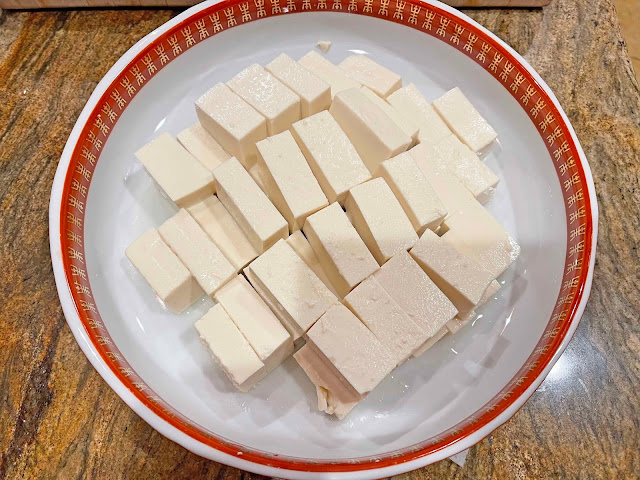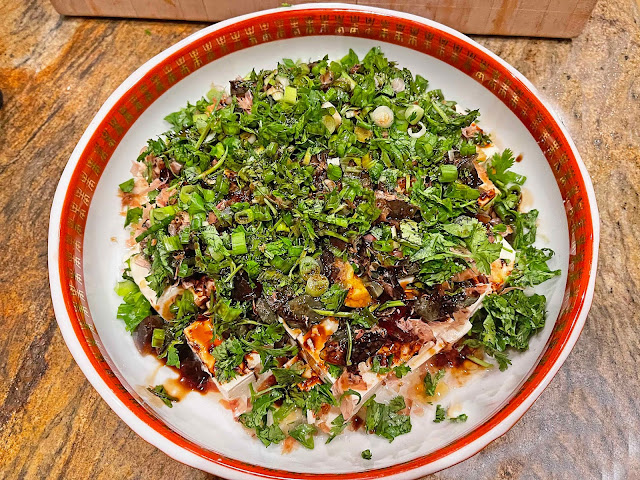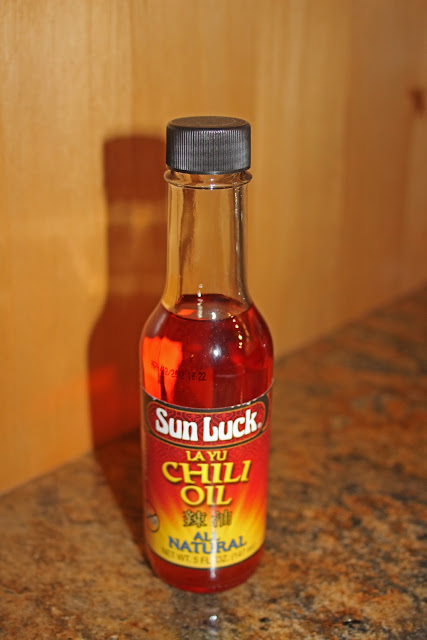Another traditional Taiwanese dish that I grew up eating. We typically had this for breakfast with rice porridge. However, there's no rule that says you can't eat it with some steamed white rice at any other time of the day. Just sayin'...The radish in this dish is salted dried daikon radish that is readily available in most Asian markets. It typically comes in strips, but you can also buy them pre-chopped. Deeeeeelish!!
Ingredients:
10 large eggs
3/4 cup chopped dried radish
3 scallions, chopped
3 cloves garlic, minced
1/4 tsp. white pepper
1/2 tsp. sugar
1 tbsp. sesame oil
1. Place 3/4 cup of chopped dried radish in a bowl and cover with water; let soak about 5 minutes, place in a colander and rinse well. Squeeze dry and set aside.
2. Beat the eggs in a bowl and stir in scallions; set aside.
3. Heat 2 tsp. of sesame oil over medium high heat in a skillet or wok. Add minced garlic & toss for a few seconds. Add dried radish and saute for about 1 minute; add white pepper and sugar; stir briefly.
4. Add the beaten eggs to the pan and stir well. Cook the radish-egg mixture as you would scrambled eggs, pressing down with a spatula to get some color on the omelette. Do not overcook. Remove to a serving dish and serve with white rice or rice porridge.
Ingredients:
10 large eggs
3/4 cup chopped dried radish
3 scallions, chopped
3 cloves garlic, minced
1/4 tsp. white pepper
1/2 tsp. sugar
1 tbsp. sesame oil
1. Place 3/4 cup of chopped dried radish in a bowl and cover with water; let soak about 5 minutes, place in a colander and rinse well. Squeeze dry and set aside.
2. Beat the eggs in a bowl and stir in scallions; set aside.
3. Heat 2 tsp. of sesame oil over medium high heat in a skillet or wok. Add minced garlic & toss for a few seconds. Add dried radish and saute for about 1 minute; add white pepper and sugar; stir briefly.
4. Add the beaten eggs to the pan and stir well. Cook the radish-egg mixture as you would scrambled eggs, pressing down with a spatula to get some color on the omelette. Do not overcook. Remove to a serving dish and serve with white rice or rice porridge.
Dried radish, pre-chopped.
Soak the chopped dried radish about 5 minutes, drain, squeeze dry & set aside.
Minced garlic & chopped scallion.
Saute garlic in 1 tbsp. sesame oil.
Add dried radish & saute about 1 minute.
Season with white pepper & sugar. Remove from heat and let cool.
Add egg mixture to the sautéed radish and cook like you would scrambled eggs (let the egg set on the bottom, then use spatula to cut through, turn over, and press down). Should be lightly browned but not overcooked.






















































